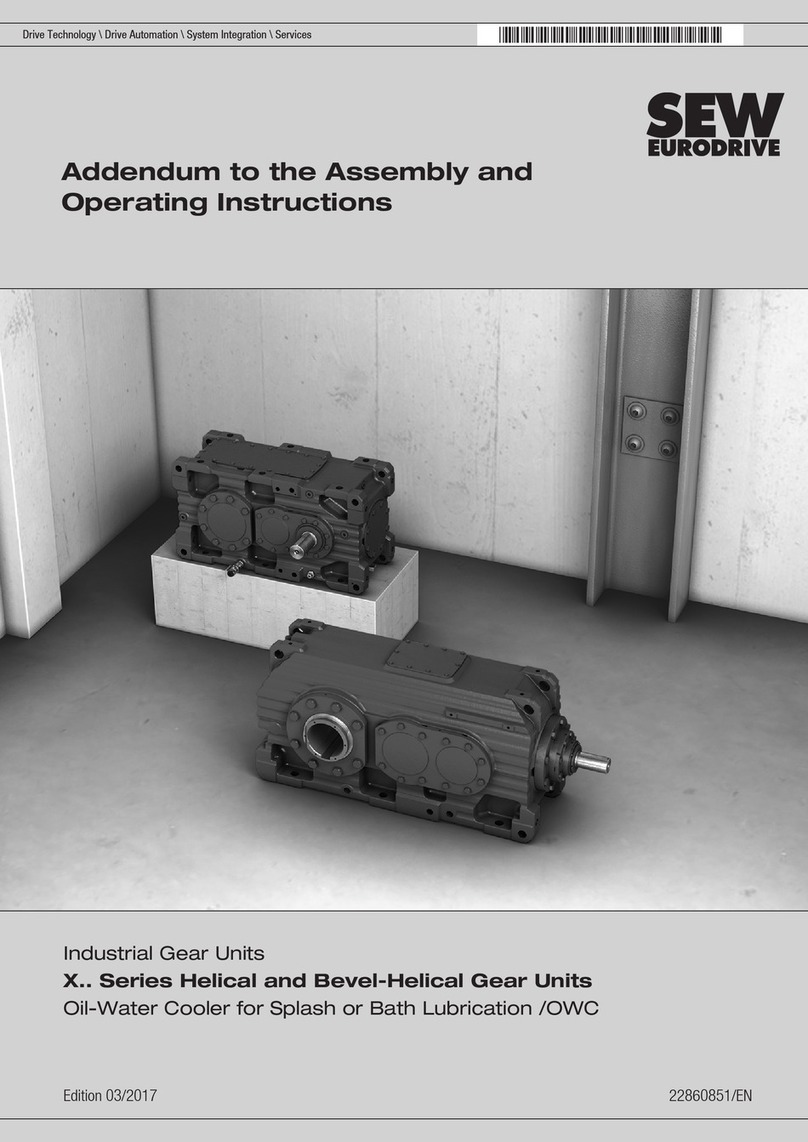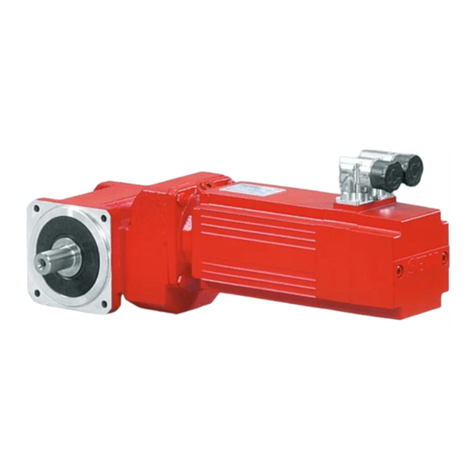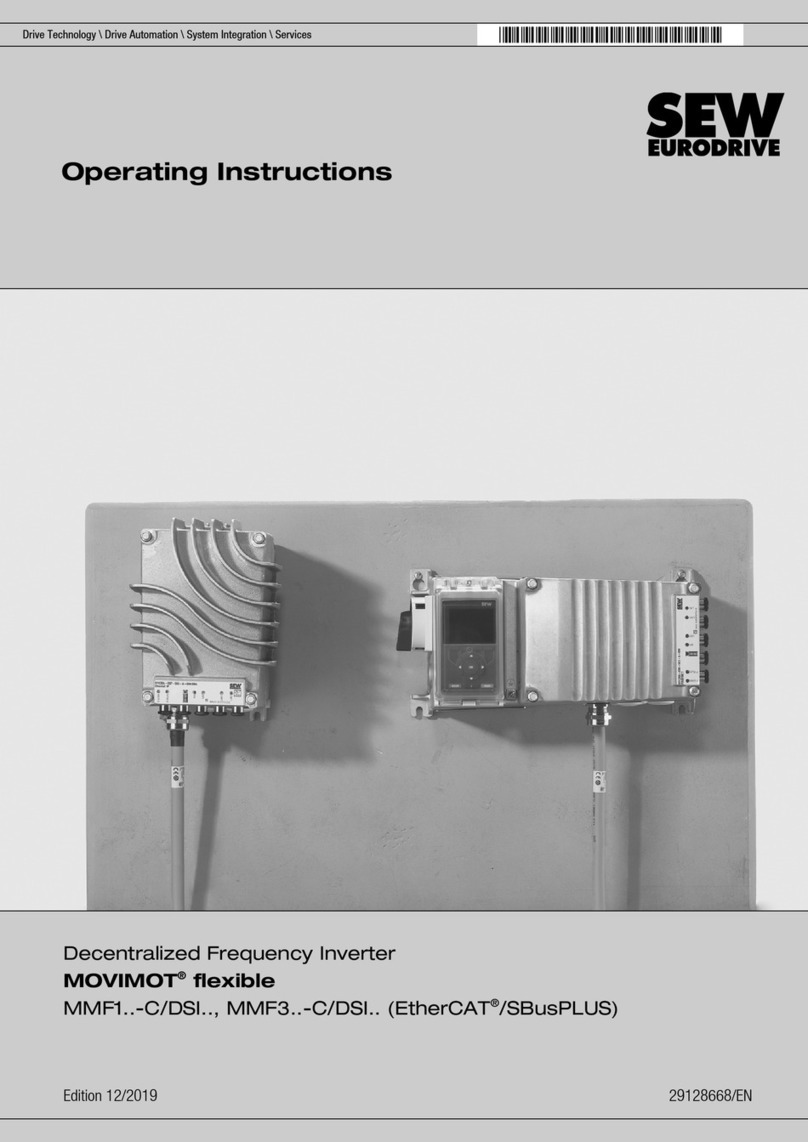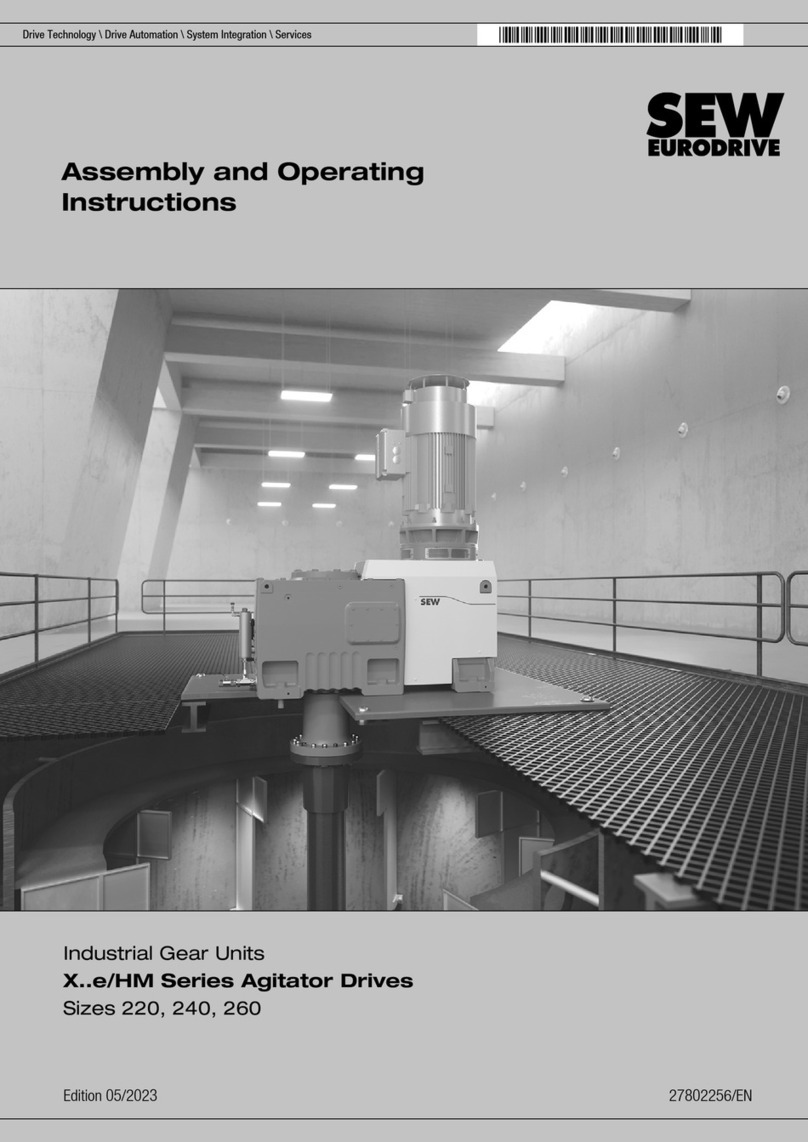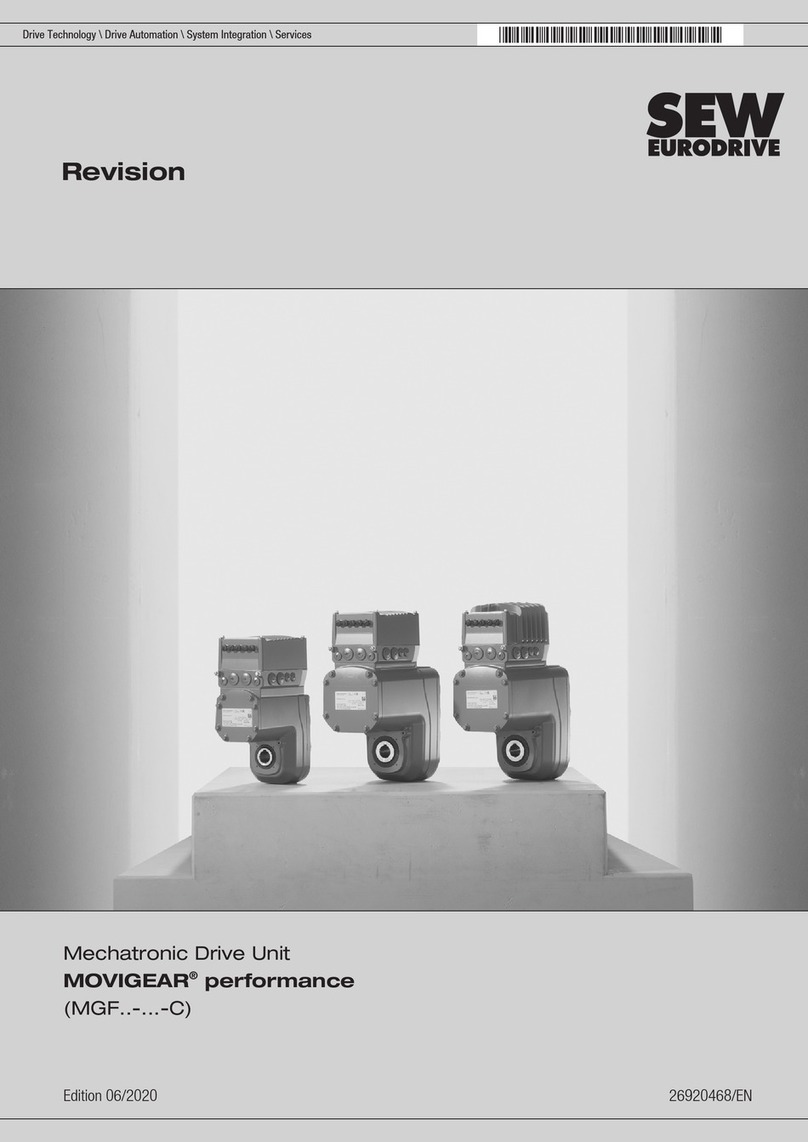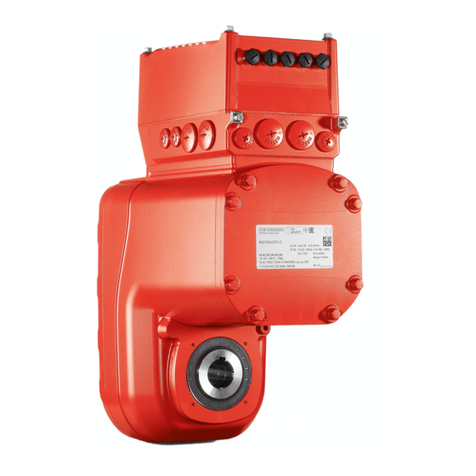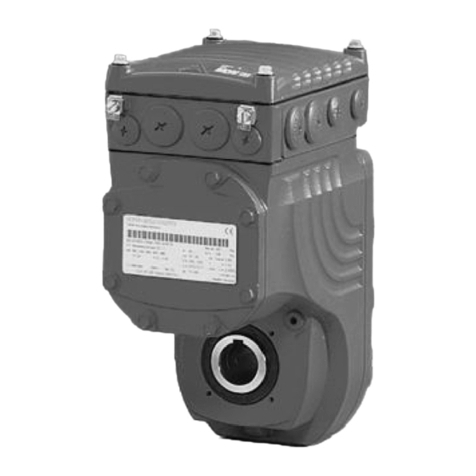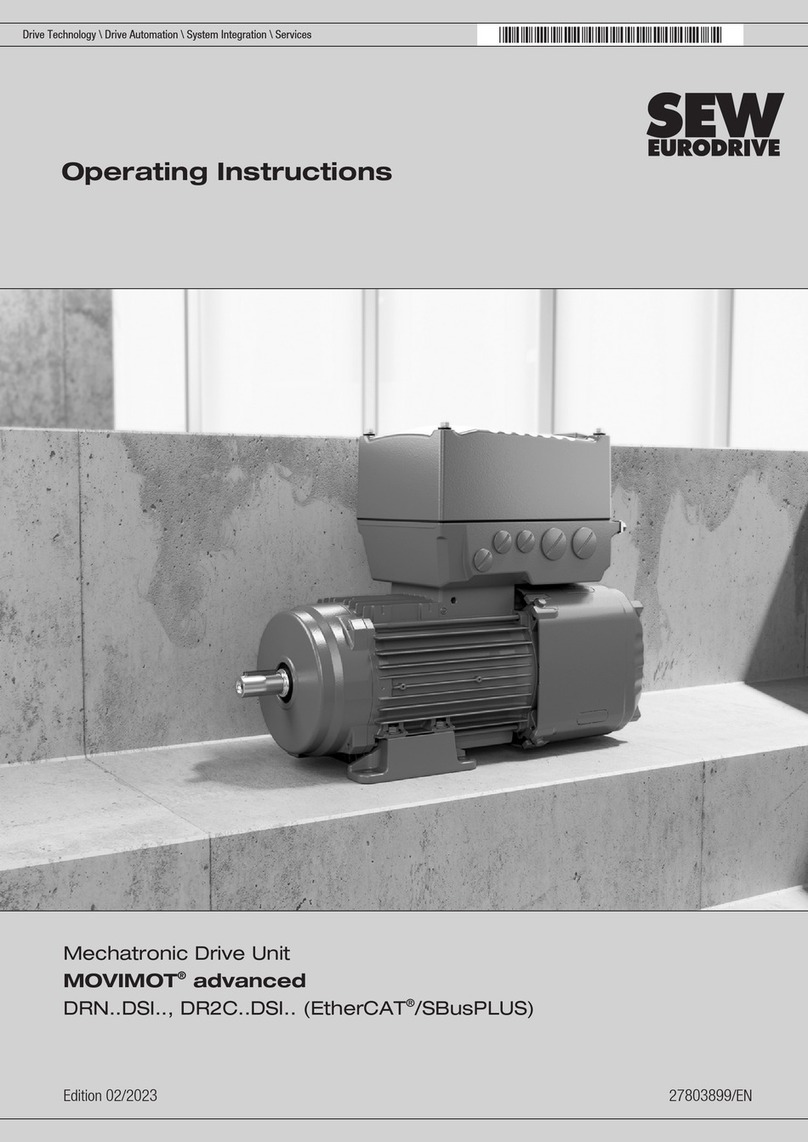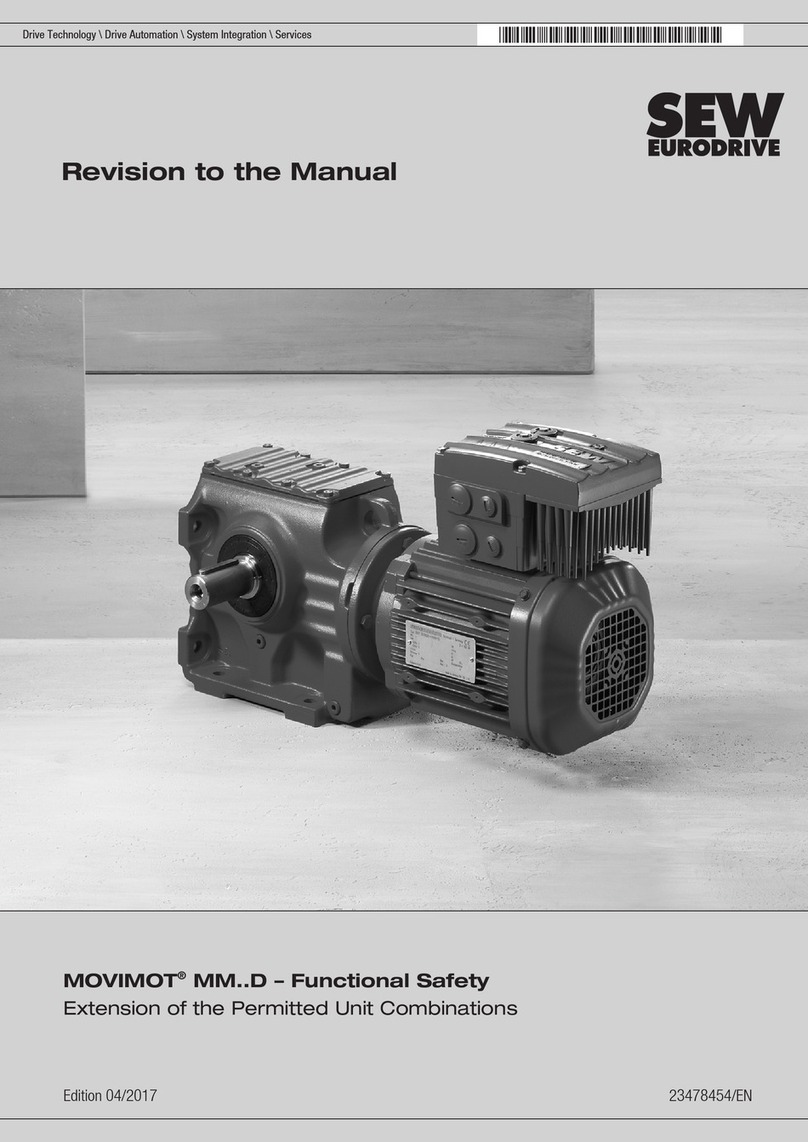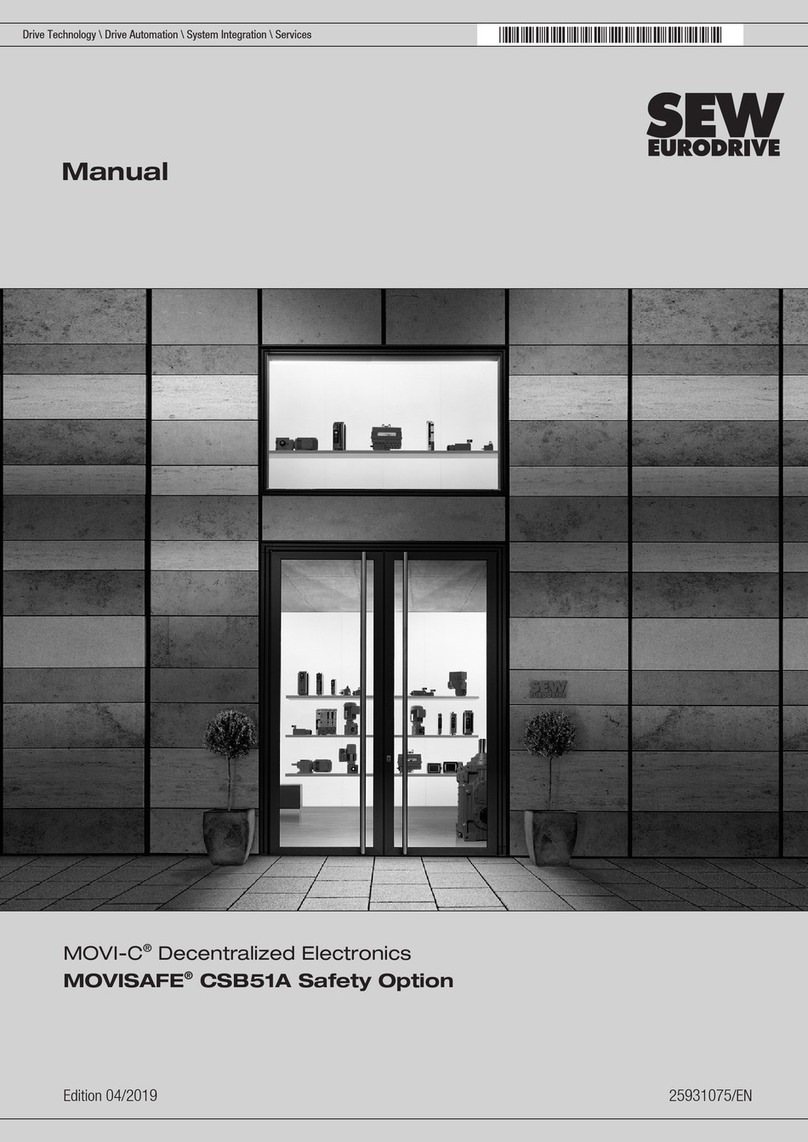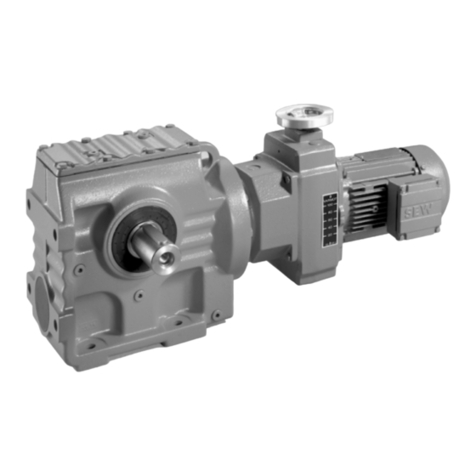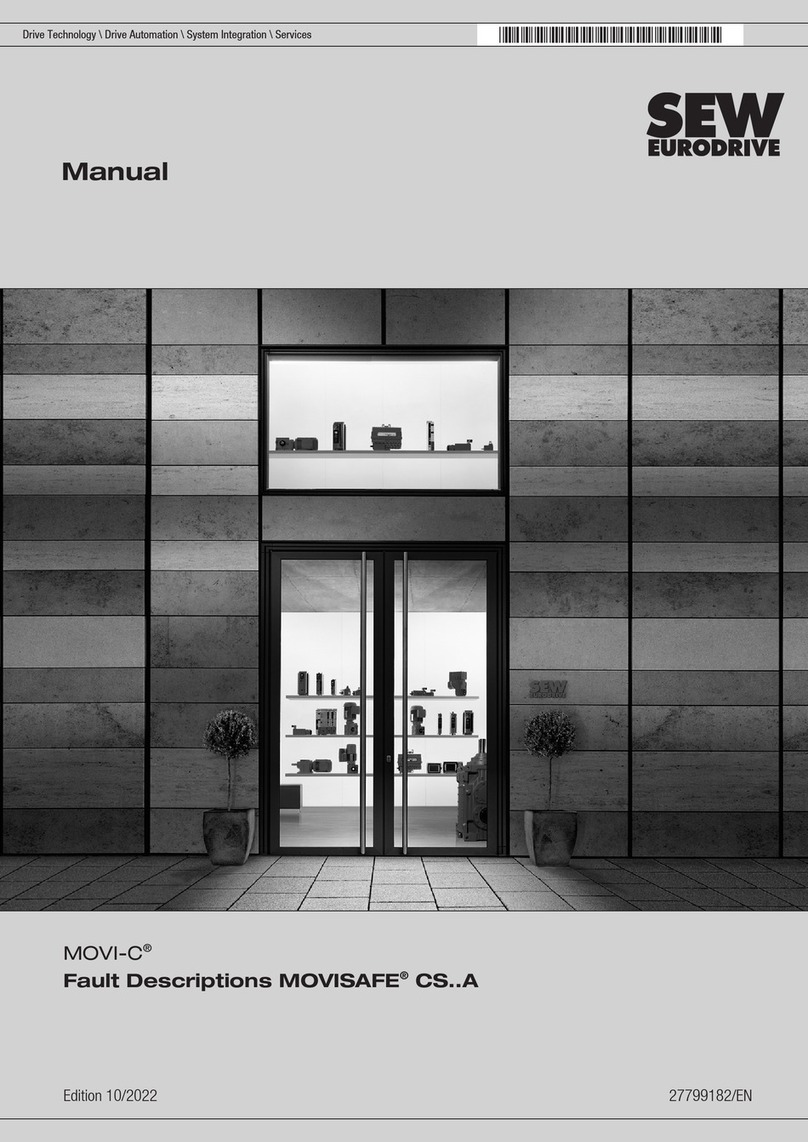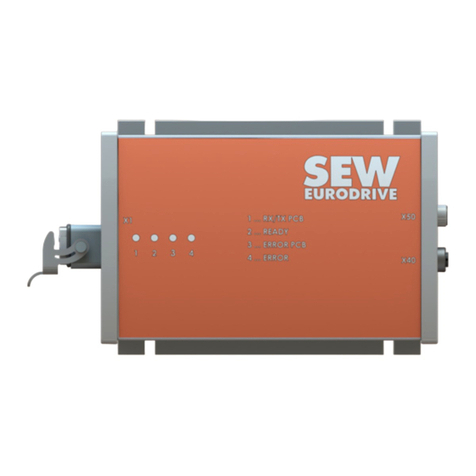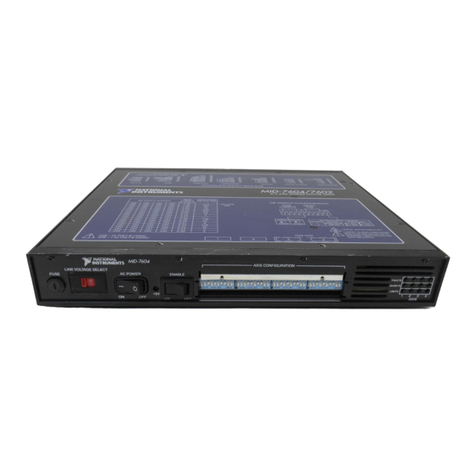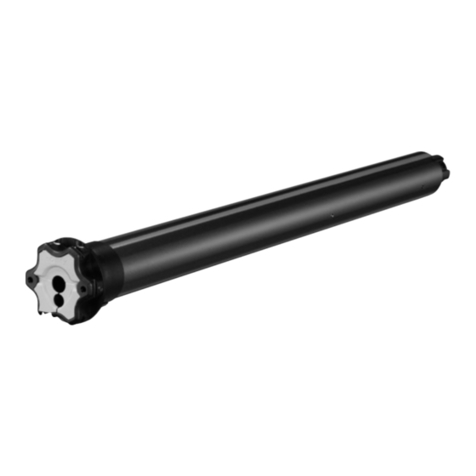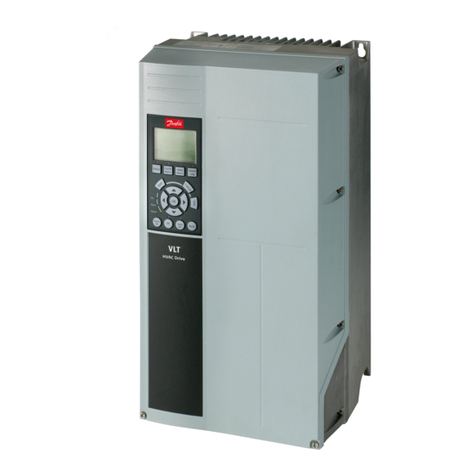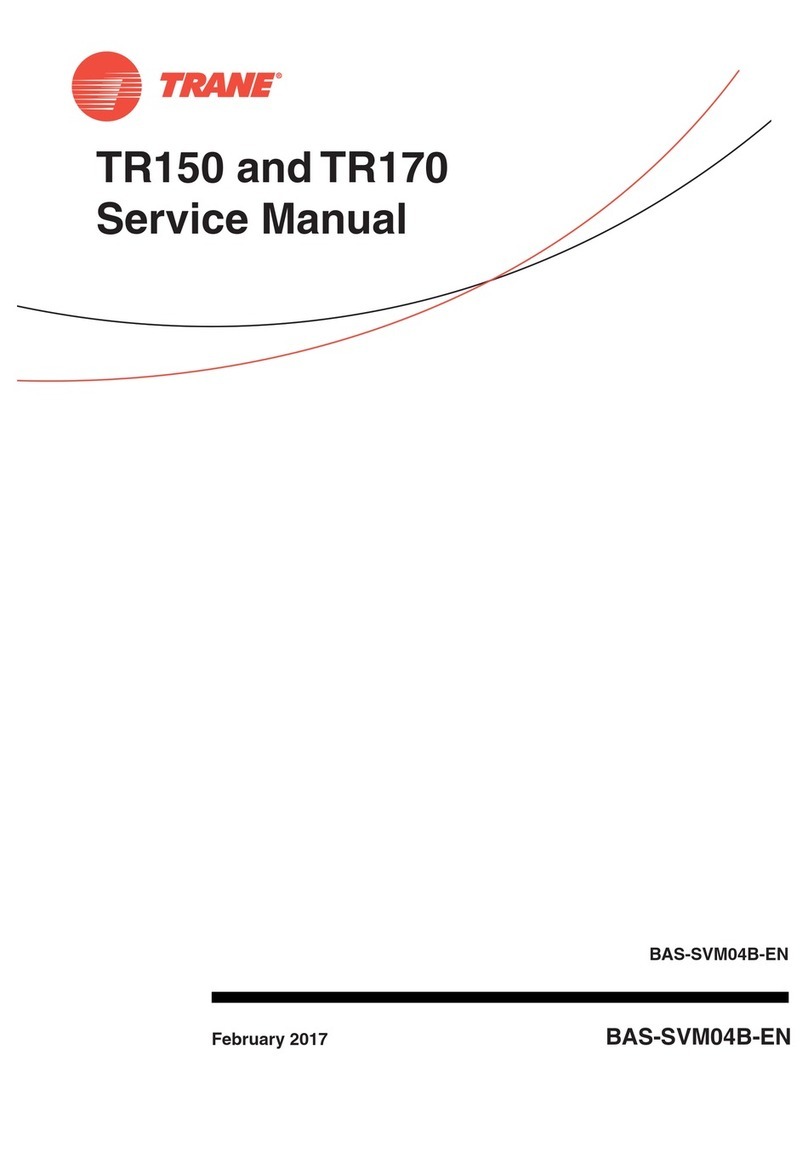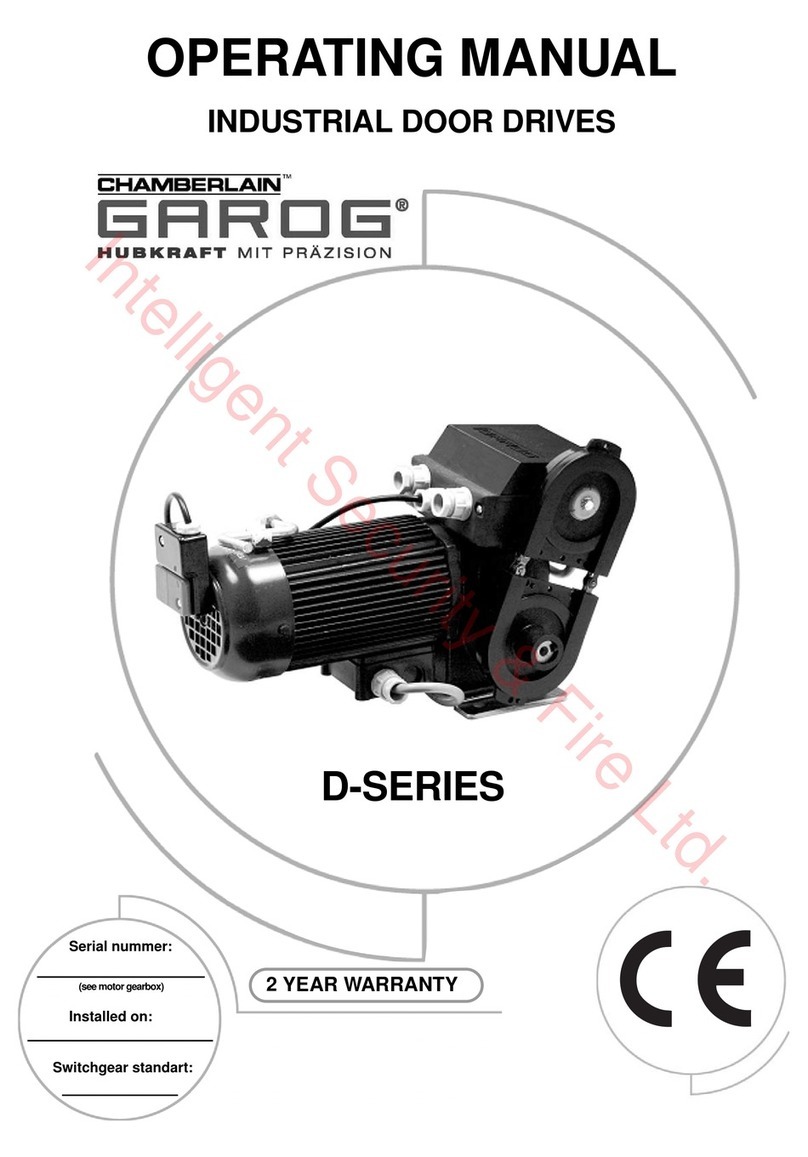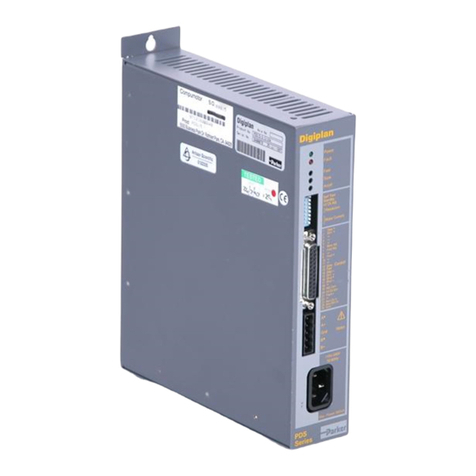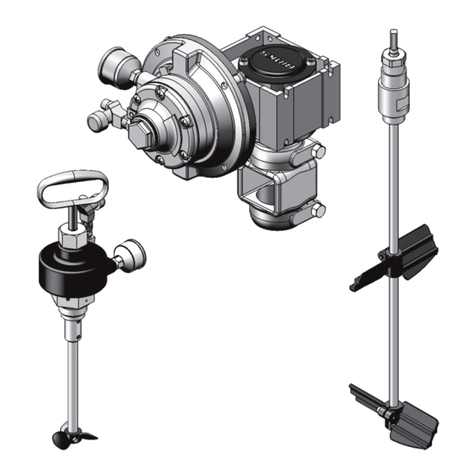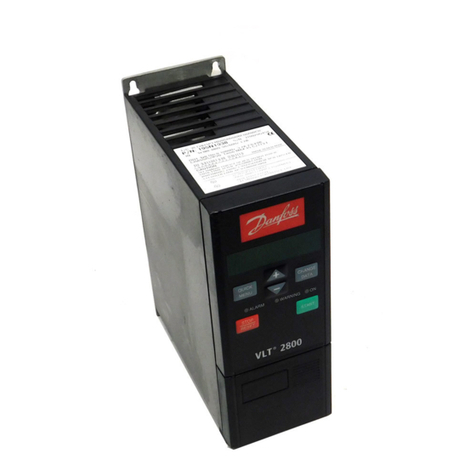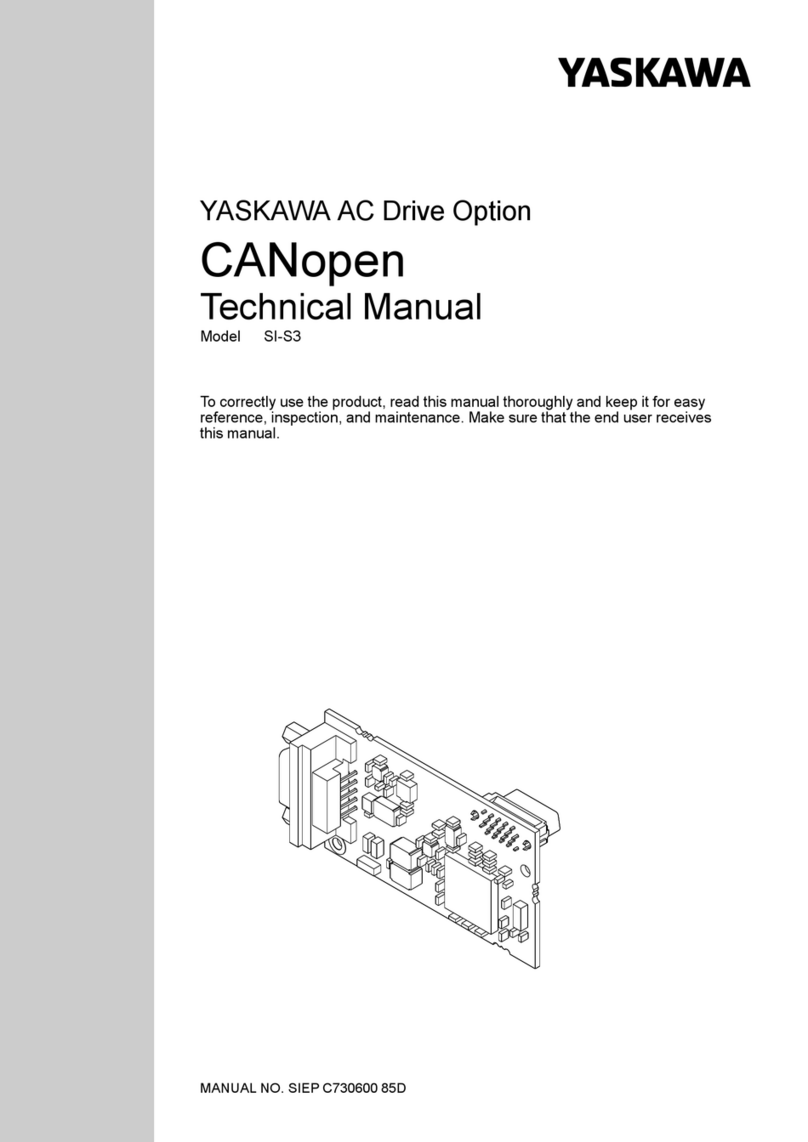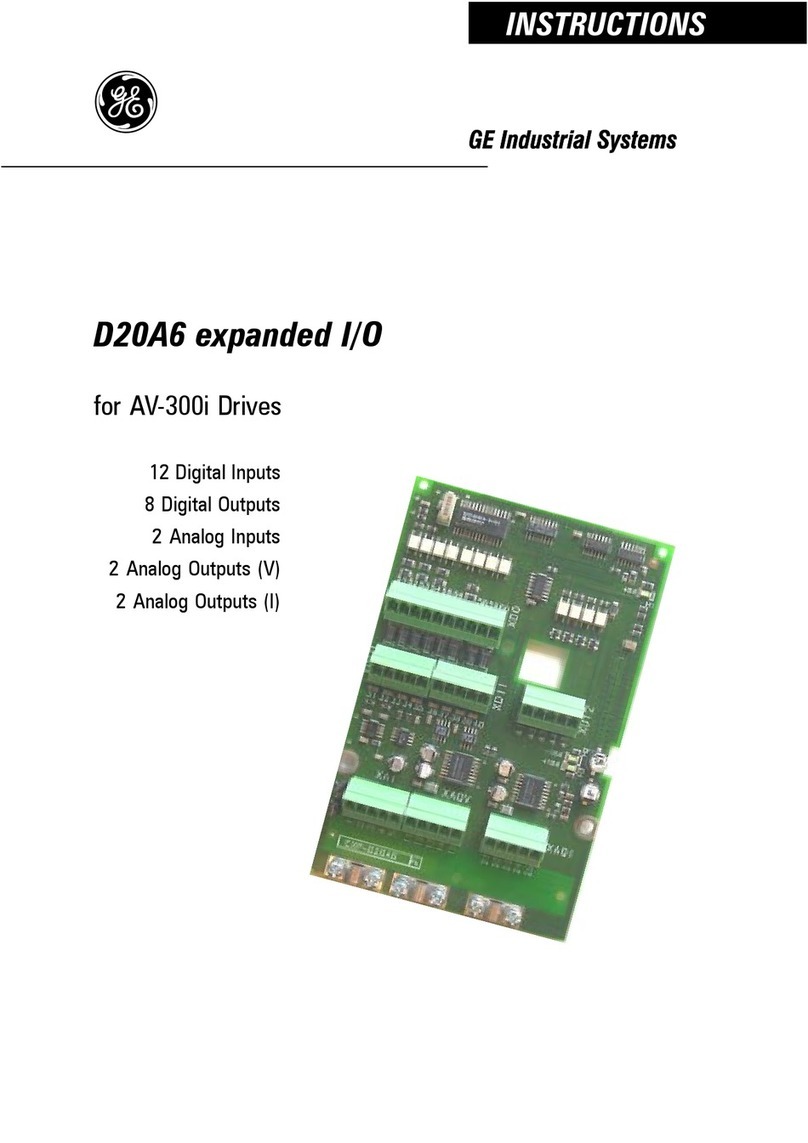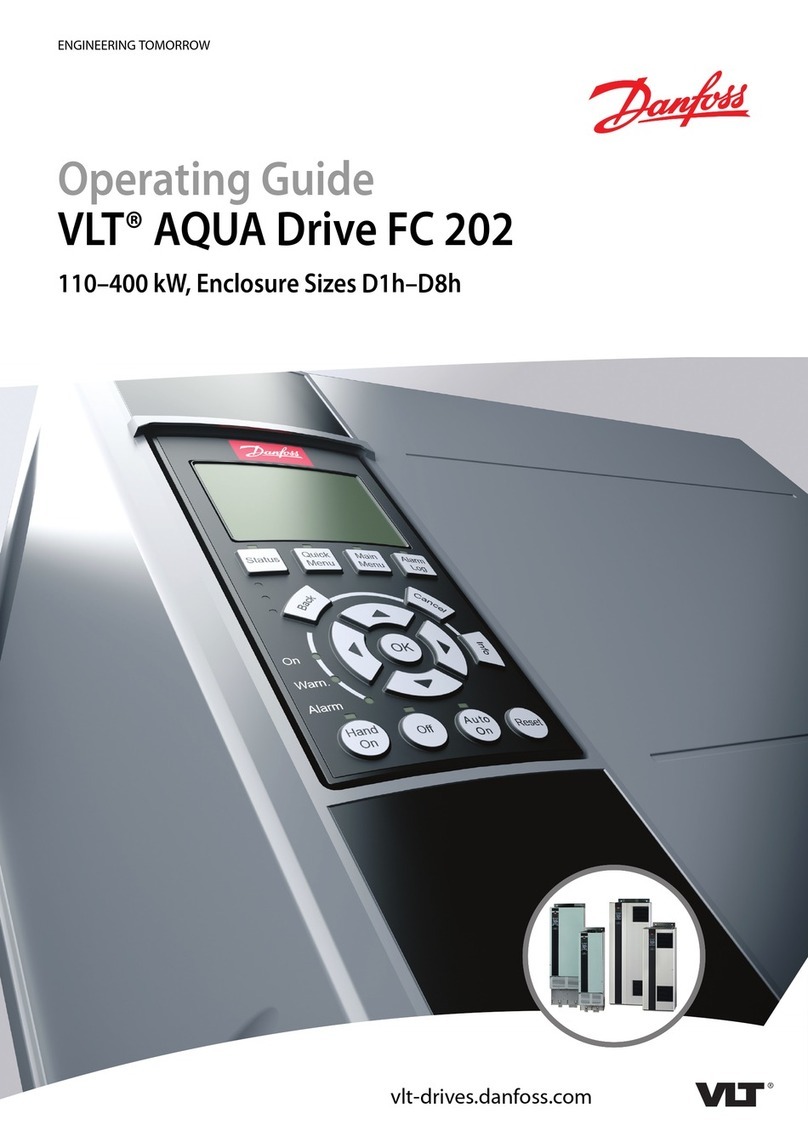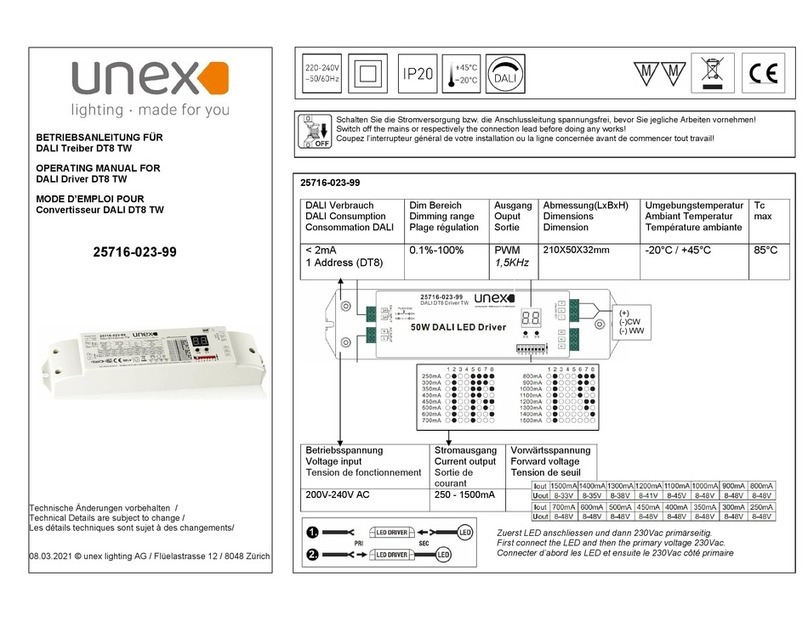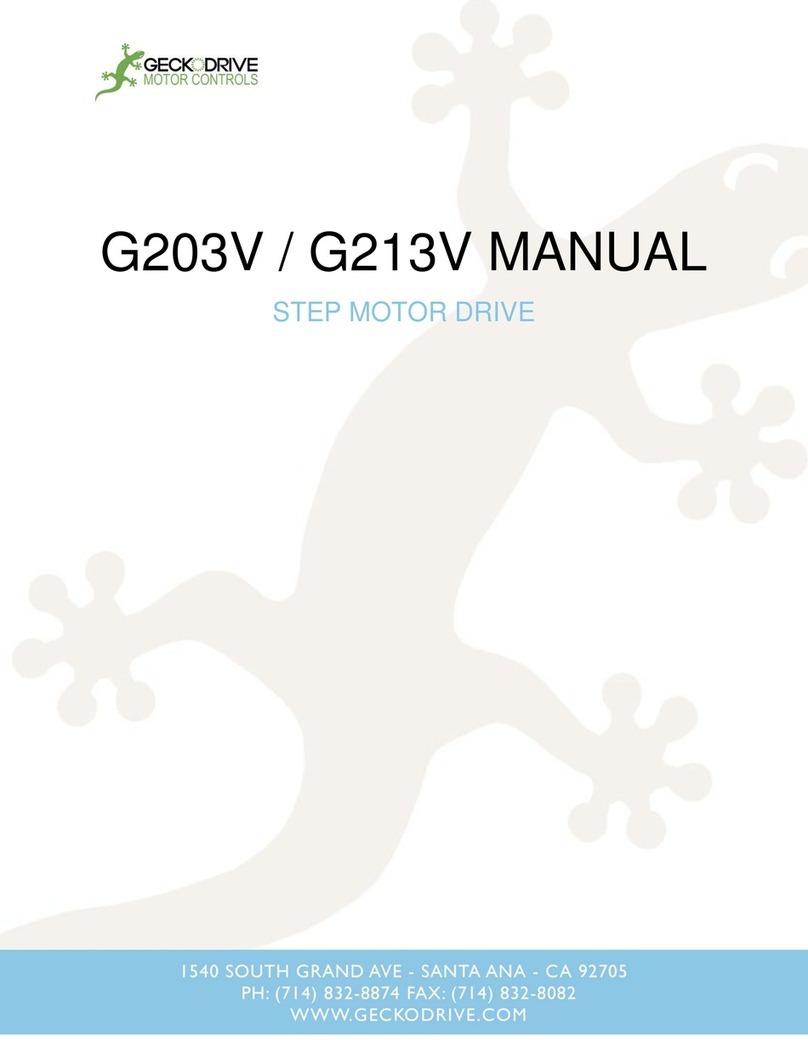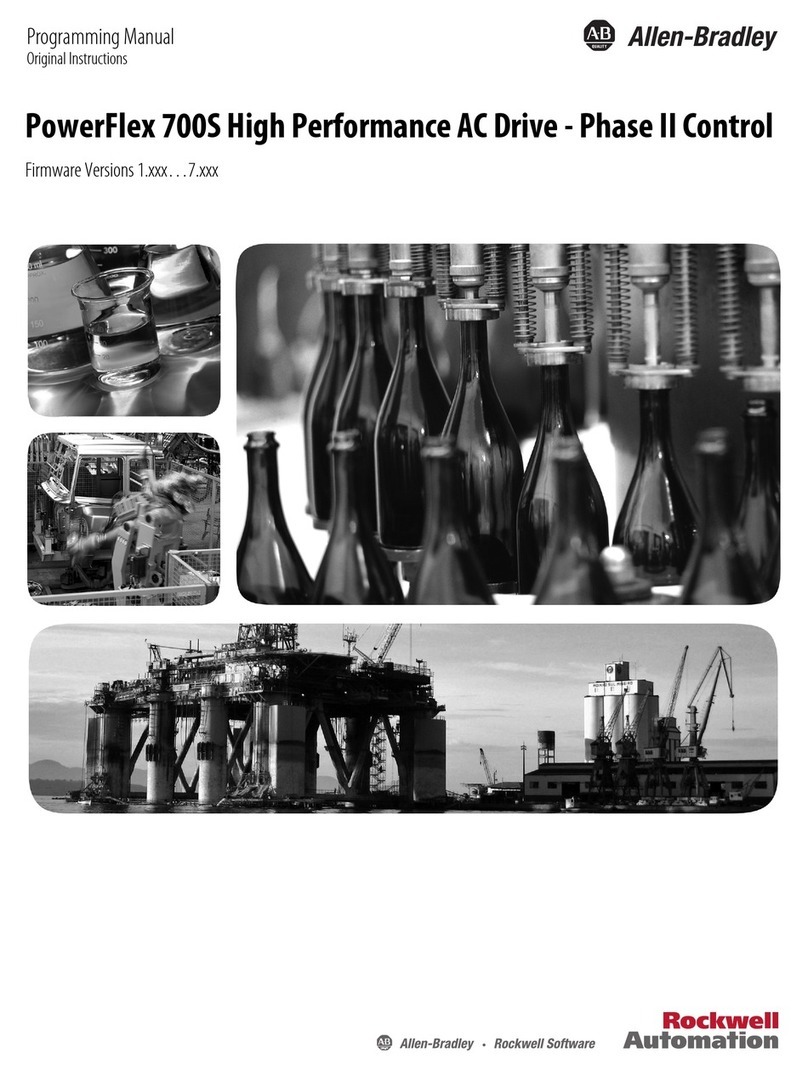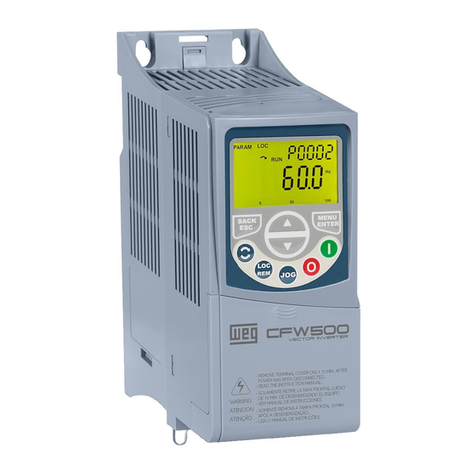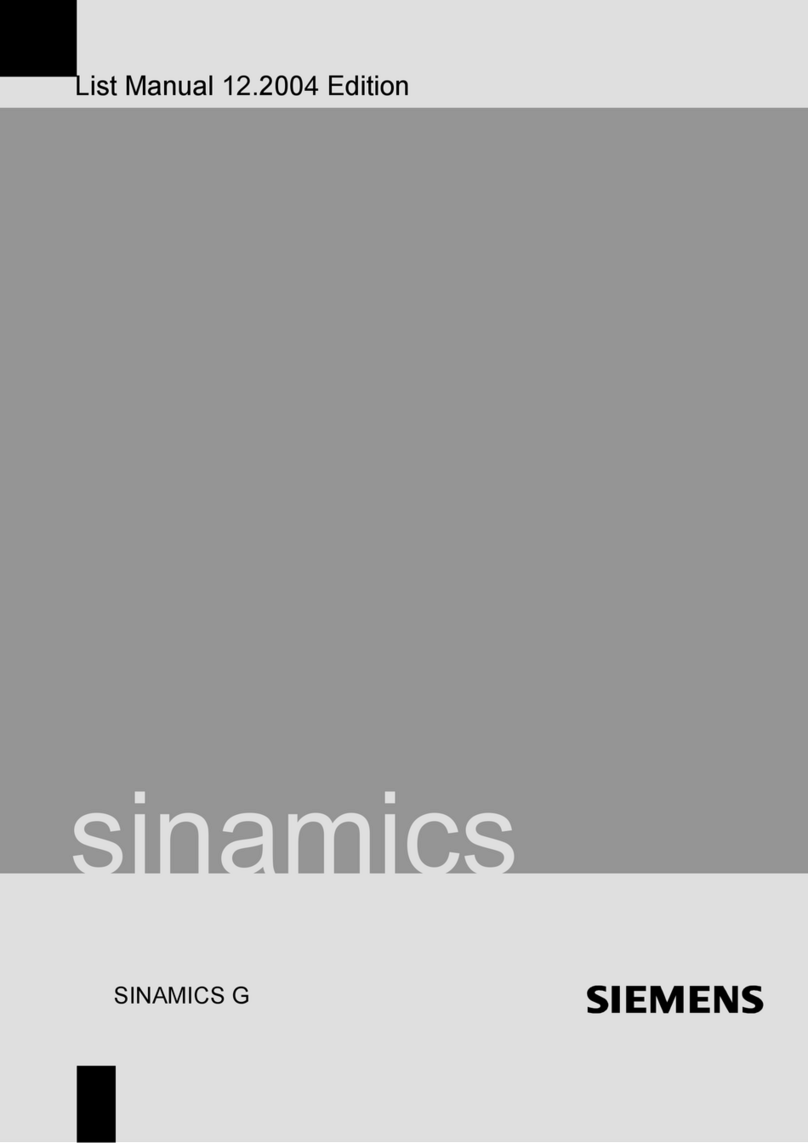
Installation 2
MOVITRAC
®
31C Operating Instructions
9
2.5 Installation instructions
Safety instructions (
→
Sec. 1, Page 4) must be strictly observed during installation!
Use only original connection components!
Observe the
tightening torques
of the MOVITRAC
®
31C power terminals:
Size 0
→
1.5 Nm (13.3 lb.in) / Size 1
→
0.6 Nm (5.3 lb.in) /
Size 2
→
1.5 Nm (13.3 lb.in) / Sizes 3 and 4
→
3.5 Nm (31 lb.in)
Observe minimum required ventilation space
of units (sufficient cooling)! Leave a minimum
clearance of
100 mm (4 in) above and below
the unit. No lateral clearance required.
Units must be
mounted vertically
. Other mounting positions are not permissible!
The MOVITRAC
®
31C is designed for operation on
voltage power systems with a directly
earthed neutral point
(TN and TT power systems)
.
However, operation on voltage power systems with a non-earthed neutral point (for example
IT
power systems
) is also
permitted
. SEW recommends using earth-leakage monitors with pulse-
code measurement in voltage systems with non-earthed neutral points (IT systems). This pre-
vents the earth capacitance of the inverter from inadvertently triggering the earth-leakage moni-
tor. The EMC limit values for interference emission are not specified for voltage systems with a
non-earthed neutral point (IT power systems). Line filter effectiveness is extremely limited.
With
more than four units
on a single
mains contactor
dimensioned for the total current of all
units:
connect a 3-phase line choke
in series to limit the inrush current.
Run
power cables
and
electronic leads
in separate cable ducts.
Mains power cable:
based on input rated current I
in
at rated load (Data
→
Sec. 5).
PE mains connection (
→
EN 50178):
If cross-section of PE conductor is < 10 mm² (AWG8), a
second lead with the cross-section of the mains connection cable must be run parallel to the PE
conductor via separate terminals or a copper PE conductor with a cross-section of 10 mm²
(AWG8) must be used. If the mains connection cable is
≥
10 mm² (AWG8), a copper PE conduc-
tor with the cross-section of the mains connection cable must be used. During operation leakage
currents > 3.5 mA can occur.
Motor cable:
based on the output rated current I
N
(Data
→
Sec. 5).
The
input fuses
must be installed at the beginning of the power cable, directly after the busbar
junction. (
→
Sec. 2.8.1: F11/F12/F13). Use fuse types D, DO, NH or power circuit breakers.
An
earth leakage circuit-breaker
is
not permissible as the sole protection device, as leakage
currents > 3.5 mA
can occur during normal inverter operation.
Alternate operation of two motors from one inverter:
a changeover contactor must be provided
for each of the two motors cables.
Changeover contactors may only be actuated when the
inverter is disabled!
Only connect a
resistive/inductive load (motor)
to the
inverter output
, no capacitive load!
Recommendation:
Observe a minimum switch-off time of 10 s for the mains contactor K11.
Binary inputs
are
opto-isolated
.The
binary outputs
are
short-circuit-proof
, but
not external-
voltage proof
. Connecting an
external voltage source
to the binary outputs can
damage
them!
Connection of braking resistors:
Use two closely adjacent twisted wires or a 2-core shielded
power cable, with a cross-section based on the inverter rated current. (Data
→
Sec. 5). Protect
the braking resistor with a bimetallic relay (
→
Sec. 2.8.1: F16) tripping current according to
Technical Data of Braking Resistors (
→
Sec. 2.9).
Operation braking resistors: In normal operation the connection leads to the braking resistor
carry a high DC voltage (approx. 900 V).
If required, mount braking resistors in flat-pack
design with appropriate touchguard. When loaded with P
N
, the
surface
of the braking resistor
reaches
high temperatures
. Choose the mounting position accordingly (for example on the top
of the switch cabinet).




















